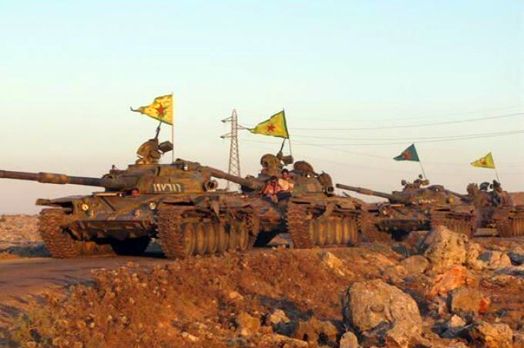
Why the US needs the Kurds in Syria
Since 2012 the U.S. has tried to put their feet in Syria. The CIA and the State Department had different ideas on how to approach the escalating conflict, and they pursued different paths. Nonetheless as the situation evolved from a failed revolution to civil war, the U.S. didn’t have a reliable partner on the ground.
In 2014 the program “train and equip” was officialized by Congress and financed with $500 millions. The idea was to bring to Turkey some Free Syrian Army soldiers to train them and then bring them back to Syria. Each candidate, before entering the program, had to pass through a screening process. Most of the applicants were rejected because their ties with Islamic extremism or terrorism.
The American and Turkish trained rebels were defeated, kidnapped, and defected to more radical groups on the ground such as Al Nusra. None of the over 100 fighters trained was able to gain back territory from ISIS.
In October 2015 Congress shut down the program and the US had to face a hard reality. The YPG was the only group left that was secular and wanted to implement democracy in Syria. And most importantly the YPG is the only force that has proved to be successful against ISIS. The Syrian Kurds in less than a year were able to gain back 6,800 square miles in Northern Syria from ISIS. At least 25,000 soldiers, between men and women, are fighting for freedom and equality in Syria. Since 2011 they established the borders of a semi-autonomous region also called Rojava, part of which remains in ISIS hands.
The YPG is now operating under the Syrian Democratic Forces (SDF), an umbrella under which some Arab, Turkmen, and Armenian militias are operating too.
Besides ISIS, the greatest YPG enemy is Turkey. Ankara who always rejected any plea of freedom by the Kurds, see Rojava as a potential threat to National Security.
Of Course the U.S. doesn’t want to alienate Turkey, though Washington has to take into consideration also their best interests. Russia is expanding their control over the country. Troops are reported to be on the ground in several areas.
Other than aligning with Syrian President Bashar al-Assad, the United States seems to have tried out any option other than fully backing the Kurds. Maybe it’s time.
The original version of this article appeared on Reuters.